French Guiana: Manduca
Manduca florestan, Camp Caiman, near Kaw, French Guiana,
April 29, 2011, courtesy of Andres Urbas.
 |
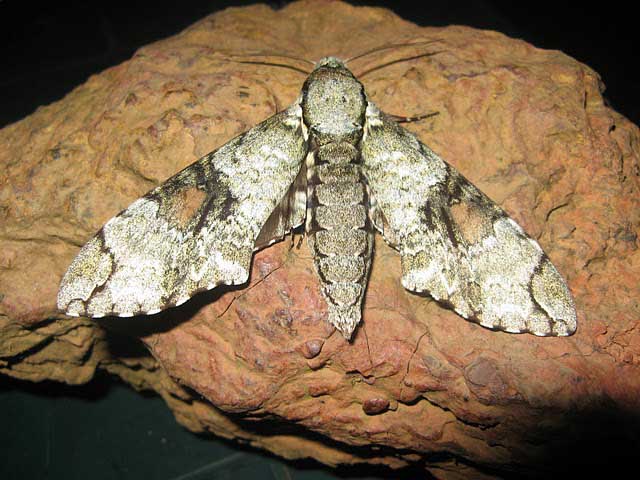
Manduca florestan, Camp Caiman, near Kaw, French Guiana,
April 29, 2011, courtesy of Andres Urbas.
 |
I have arranged the images in accordance with my perception of wing characters: predominent markings, shape, colour, size.
Females often have a wing shape or pattern that differs from the males. I hope some day to also have a thumbnail checklist for the females.
Manduca
Abdomen: three prominent orangey-yellow lateral marks; two rows of dorsal small white dots.
|
Manduca
Abdomen: five-six prominent orangey-yellow lateral marks;
|
Manduca |
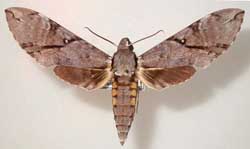 M. prestoni m: 112mm; f: 125mm M. lefeburii:Very similar to Manduca lefeburii, but the forewing upperside transverse dark band that runs through the discal spot is narrower, less diffuse, and does not reach the outer margin. It ends about 2/3 the distance to the outer margin, and is represented by dark submarginal and marginal marks on veins M3 and CuA1. The more distal dark costal mark is more conspicuous than in Manduca lefeburii. Saint-Georges de l'Oyapok; Regina |
M. prestoni: bar from costa tangent to lower edge of cell,
then subparallel to inner margin. M. lefeburii: bar from costa through cell is almost linnear, not subparallel to inner margin.
|
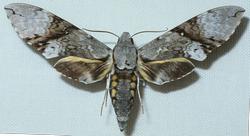 Manduca lefeburii m: 89-100mm; f: 118mm Similar to Manduca andicola. Conspicuous, diffuse, dark band from midpoint costa to outer margin near vein CuA1, housing white discal spot. Mostly pale grey with pale brown triangular patch from cell spot to costa. Aml weak, outer pm line weak. No narrow black mesial line on abdomen upperside. |
Manduca |
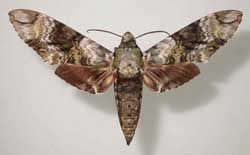 M. huascara m: 118-119mm; f: 127-130mm Thorax: light grey; slightly darker grey-mixed with yellow tegulae. Darker grey band across head and thorax juncture. Basal & postmedian areas much lighter than median area, especially dark in upper half. Small, almost obscure cell spot. Piste Coralie; Saul; Piste Kaw |
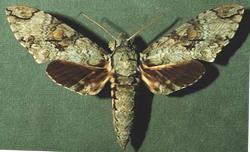 Manduca florestan m: 100-115mm; f: 110-130mm Fw gray to yellowish gray to brown with greenish tint in fresh specimens. Two black dashes running from below cell toward outer margin. Prominent reddish brown patch outside cell, above dashes. Left fw pm lines: S-shaped, prominent for upper 3/4. Body side of black apical, trapezoid, oblique. Saul; Kaw |
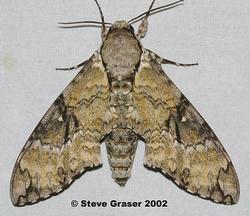 Manduca vestalis m: 110mm; f: 130mm Thorax light grey; tegulae slightly darker with black outer edge. One prominent, thin, distinct, S-shaped, pml on left fw. Other "pmlines" broadly diffuse. Ground colour light grey, often with yellowish cast. Kaw |
+++++++
This page is brought to you by Bill Oehlke and the WLSS. Pages are on space rented from Bizland. If you would like to become a "Patron of the Sphingidae Site", contact Bill.
Please send sightings/images to Bill. I will do my best to respond to requests for identification help.
 Show appreciation for this site by clicking on flashing butterfly to the left. The link will take you to a page with links to many insect sites. |